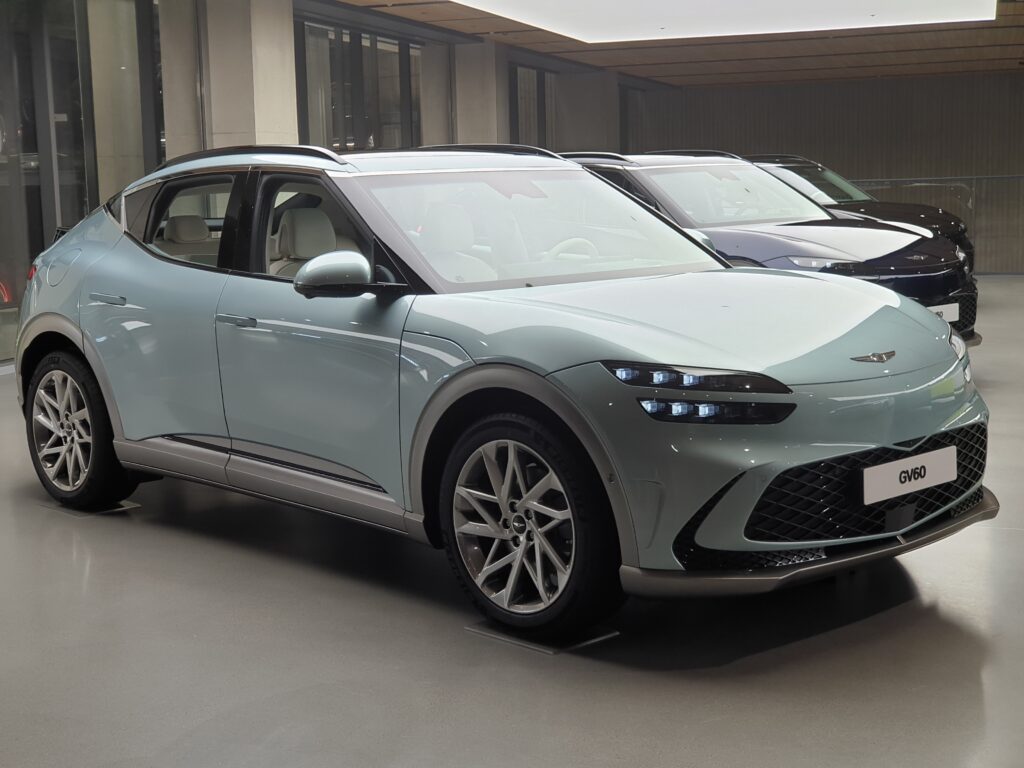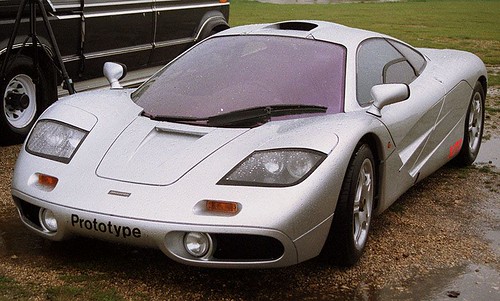
The 1990s. Ah, what a glorious decade for anyone with even a drop of petrol in their veins! It was an era when carmakers, fresh from the excesses of the ’80s but not yet bogged down by the digital age, dared to be truly bold. Performance met personality in a symphony of turbocharged legends, sleek luxury cruisers, and raw muscle machines, leaving an unforgettable mark on the asphalt and in our hearts.
Remember the thrill of seeing a low-slung supercar flash by, or the distinctive growl of a street legend announcing its presence from a block away? The ’90s delivered some of the most iconic vehicles ever to hit the pavement, cars that weren’t just about getting from A to B, but about the sheer, unadulterated joy of the journey itself. Whether you were drooling over JDM imports, dreaming of European engineering, or loving the raw muscle of American classics, this was truly a peak era for automotive innovation.
So, buckle up, because we’re about to take a nostalgic ride through the first half of our list of the 15 coolest cars from the 1990s that still have the power to stop traffic and drop jaws today. These machines were ahead of their time or just the right mix of muscle and style, and their legacy lives on, cementing the ’90s as a golden era for car enthusiasts with some of the most unforgettable cars rolling off the assembly line.
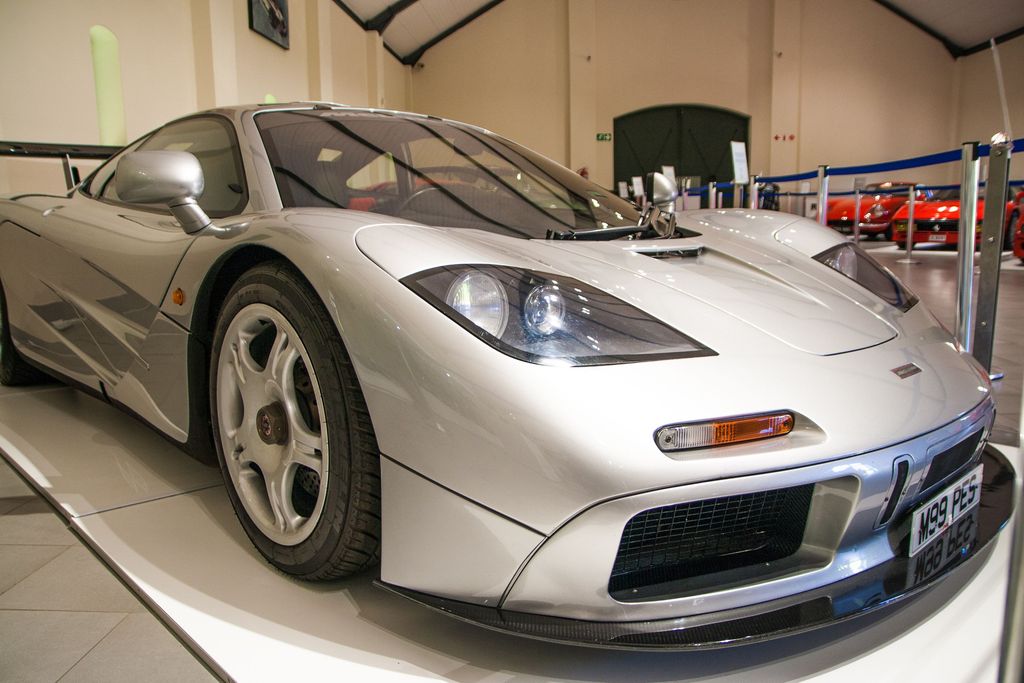
1. **McLaren F1**What can one truly say about the McLaren F1 that hasn’t been uttered in reverent tones a thousand times over? It’s not just a car; it’s a masterpiece, a monument to engineering excellence that redefined what a supercar could be. Gordon Murray’s creation broke every convention, from its utterly unique central driving position to the mesmerizing gold-lined engine bay – a detail that still makes car fanatics swoon.
This was a car built with no compromises, evident in its BMW-sourced V12 engine that didn’t even need catalytic converters, and a chassis constructed entirely from carbon fiber before the material became ubiquitous in high-performance vehicles. For over a decade, its mind-bending 240+ mph top speed remained unbeaten, an astonishing feat of raw power and aerodynamic prowess. The F1 wasn’t just fast; it was an exercise in obsessive attention to detail.
Every aspect of the F1 speaks to this no-holds-barred philosophy. Imagine a custom-made titanium toolkit, or a specially developed Kenwood stereo, all while Murray insisted on natural driving feedback with zero electronic aids – it was pure driving, unadulterated and unfiltered. Each car took three months to build by hand, a testament to the meticulous craftsmanship involved, and only 106 examples were ever made, making it an incredibly rare beast.
The F1 wasn’t created to hit marketing targets or satisfy shareholders; it was pure engineering passion brought to life. It stands as a testament to innovation and excellence, a car that, at around $20 million today, is arguably still undervalued considering its immense significance in automotive history. No modern hypercar, despite their superior numbers and technological wizardry, truly comes close to capturing the F1’s purity of purpose and legendary status.
Read more about: The Gears of Time: Unearthing 14 Criminally Underrated Rides That Deserve Their Moment in the Sun
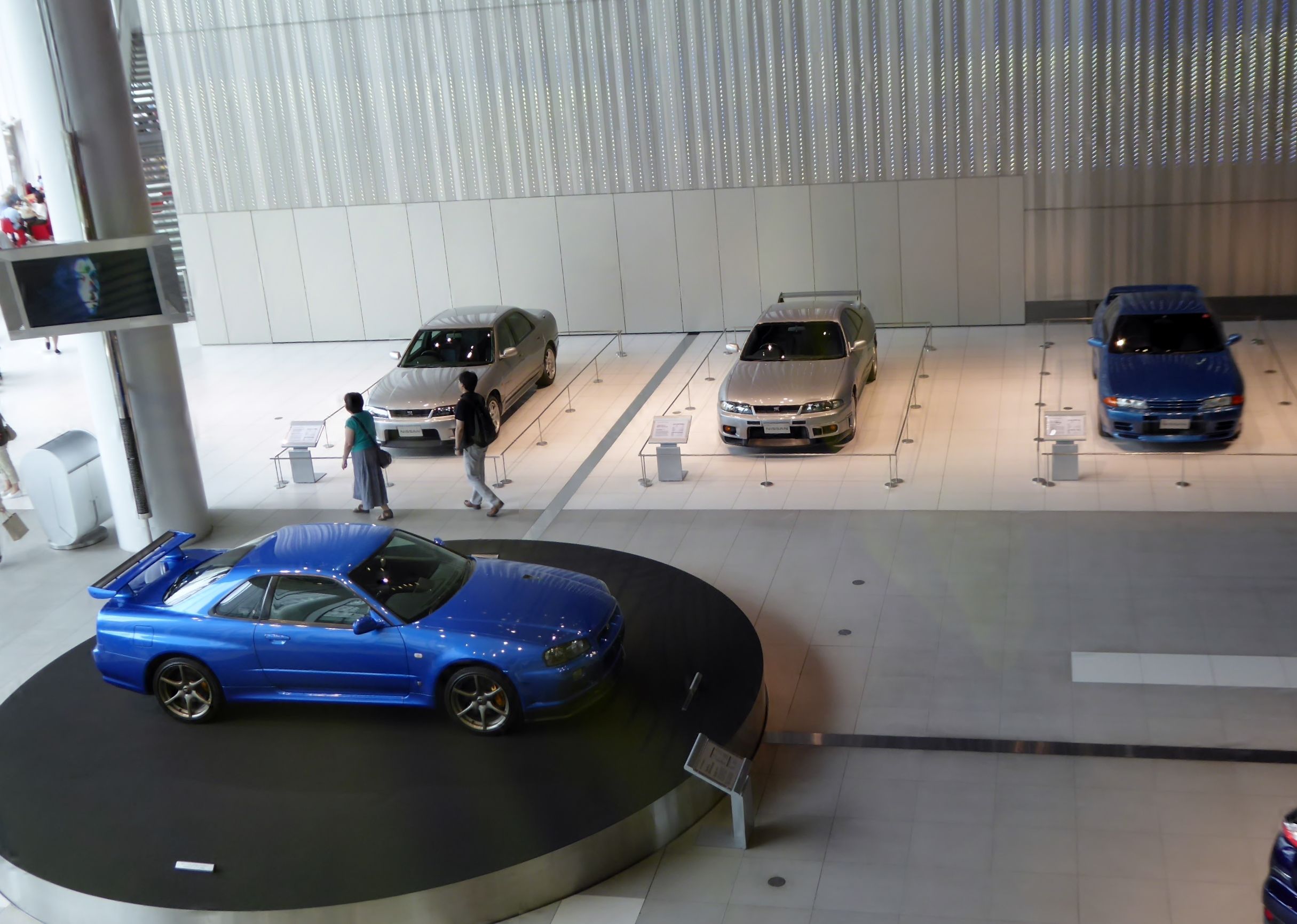
2. **Nissan Skyline GT-R R34**Before the `Fast & Furious` franchise cemented its place in pop culture, the Nissan Skyline GT-R R34 was already a legend in Japan and among serious car enthusiasts worldwide. Affectionately nicknamed “Godzilla,” this technological tour de force was, at its heart, a race car with license plates, delivering a level of performance that was simply jaw-dropping for its era.
Underneath that aggressively styled hood lurked the legendary RB26DETT twin-turbo straight-six engine. This mechanical marvel could be tuned to absolutely ridiculous power levels, transforming an already potent machine into a true asphalt-shredding monster. Complementing this power was Nissan’s groundbreaking ATTESA E-TS all-wheel-drive system and four-wheel steering, which made the R34 handle with a precision and grip that few other cars could match.
But what truly set the R34 apart from its contemporaries was its multifunction display. This cutting-edge screen showed real-time performance data, giving drivers a feeling that they were piloting a video game car in real life, pushing the boundaries of what was expected from a road car. The aggressive styling, punctuated by those iconic round taillights, became instantly recognizable globally, radiating an aura of undeniable street credibility.
For years, these magnificent machines were forbidden fruit in the US due to import restrictions, which only served to amplify their desirability and mystique. Now that they’re finally becoming legal to import, prices have, predictably, gone completely insane. But honestly, for those who appreciate a true piece of JDM royalty, owning an R34 GT-R is a dream come true, worth every single penny to experience its blend of technology, power, and undeniable cool.
Car Model Information: 2024 Jeep Wrangler Rubicon
Name: Nissan Skyline GT-R
Caption: 2002 Nissan Skyline GT-R V·spec II (BNR34)
Manufacturer: Nissan
Production: unbulleted list
Assembly: unbulleted list
Class: Sports car
Related: unbulleted list
Transmission: unbulleted list
Predecessor: Nissan Skyline#BLRA-3 Skyline Sport
Successor: Nissan GT-R
Categories: 1970s cars, 1980s cars, 1990s cars, 2000s cars, 24 Hours of Le Mans race cars
Summary: The Nissan Skyline GT-R (Japanese: 日産・スカイラインGT-R, Hepburn: Nissan Sukairain GT-R) is a Japanese sports car based on the Nissan Skyline range. The first cars named “Skyline GT-R” were produced between 1969 and 1972 under the model code KPGC10, and were successful in Japanese touring car racing events. This model was followed by a brief production run of second-generation cars, under model code KPGC110, in 1973.
After a 16-year hiatus, the GT-R name was revived in 1989 as the BNR32 (“R32”) Skyline GT-R. Group A specification versions of the R32 GT-R were used to win the Japanese Touring Car Championship for four years in a row. The R32 GT-R also had success in the Australian Touring Car Championship, with Jim Richards using it to win the championship in 1991 and Mark Skaife doing the same in 1992, until a regulation change excluded the GT-R in 1993. The technology and performance of the R32 GT-R prompted the Australian motoring publication Wheels to nickname the GT-R “Godzilla” in its July 1989 edition. Wheels then carried the name through all the generations of Skyline GT-Rs, most notably the R34 GT-R, which they nicknamed “Godzilla Returns”, and described as “The best handling car we have ever driven”. In tests conducted by automotive publications, R34 GT-R have covered a quarter of a mile (402 metres) in 12.2 seconds from a standing start time and accelerated from 0–100 km/h (0–62 mph) in 4.4 seconds.
The Skyline GT-R became the flagship of Nissan performance, showing many advanced technologies including the ATTESA E-TS all-wheel drive system and the Super-HICAS four-wheel steering. Today, the car is popular for import drag racing, circuit track, time attack and events hosted by tuning magazines. Production of the Skyline GT-R ended in August 2002. The car was replaced by the GT-R (R35), an all-new vehicle based on an enhanced version of the Skyline V36 platform. Although visibly different, the two vehicles share similar design features and are manufactured in the same factory.
The Skyline GT-R was never manufactured outside Japan, and the sole export markets were Hong Kong, Singapore, Australia and New Zealand, in 1991, and the UK (in 1997, due to the Single Vehicle Approval scheme). They are also popular across the world as used Japanese imports.
Despite this, the Skyline GT-R has become an iconic sports car as a grey import vehicle in the Western world (mainly the United Kingdom, Australia, New Zealand, South Africa, Ireland, Canada, and the United States). It has become notable through pop culture such as The Fast and the Furious, Initial D, Shakotan Boogie, Tokyo Xtreme Racer, Wangan Midnight, Need for Speed, Forza, Driving Emotion Type-S, Test Drive, and Gran Turismo.
In 2019, Nismo announced that it would resume production of spare parts for all generations of the Skyline GT-R, including body panels and engines.
Get more information about: Nissan Skyline GT-R
Buying a high-performing used car >>>
Brand: Nissan Model: Skyline GT-R R34
Price: $49,778 Mileage: 27,259 mi.
Read more about: The Gears of Time: Unearthing 14 Criminally Underrated Rides That Deserve Their Moment in the Sun

3. **Toyota Supra Mk4**The Toyota Supra Mk4 is a name that resonates like a power chord through the halls of automotive history, a legend that, frankly, needs little introduction. It’s a car that transcends mere transportation, becoming a global icon synonymous with raw power, tunability, and an almost mythical aura of indestructibility. Just the mention of “Supra” conjures images of blistering straight-line speed and endless modification potential.
At its heart, the Supra Mk4 was powered by a 3.0-liter twin-turbocharged inline-six engine, officially rated to produce up to 276 hp and 318 lb-ft of torque. However, whisper it quietly, it’s often said to exceed those numbers in the real world, much to the delight of its ardent fans. This powerhouse, combined with its sleek, aerodynamic design, made it an absolute sensation among tuners and racers who quickly discovered its incredible capabilities.
The Supra’s true magic lay not just in its factory performance but in its extraordinary potential for upgrades. It’s celebrated for its incredibly strong aftermarket support, capable of handling truly massive power increases that would make lesser engines spontaneously disassemble. This makes it a blank canvas for those who dream of pushing boundaries, creating truly bespoke and outrageously powerful machines.
Today, the Mk4 Supra isn’t just a car; it’s a highly sought-after icon, a collectible that commands serious respect and impressive prices. Its timeless appeal, combined with its legendary status in pop culture and motorsports, ensures that every time one rolls by, it captures attention and reminds us why the ’90s were such a golden era for performance vehicles. It’s a car that simply refuses to fade into obscurity.
Car Model Information: 1995 Toyota Supra SZ
Name: Toyota Supra
Caption: Toyota GR Supra (J29/DB)
Manufacturer: Toyota
Aka: unbulleted list
Production: unbulleted list
Class: Sports car
BodyStyle: fastback,coupé
Layout: Front-engine, rear-wheel-drive layout
Predecessor: Toyota Celica (A20)
Categories: 1980s cars, 1990s cars, 2000s cars, 2010s cars, 2020s cars
Summary: The Toyota Supra (Japanese: トヨタ・スープラ, Hepburn: Toyota Sūpura) is a sports car and grand tourer manufactured and developed by the Toyota Motor Corporation beginning in 1978. The name “supra” is a definition from the Latin prefix, meaning “above”, “to surpass” or “go beyond”.
The initial four generations of the Supra were produced from 1978 to 2002. The fifth generation has been produced since March 2019 and later went on sale in May 2019. The styling of the original Supra was derived from the Toyota Celica, but it was longer. Starting in mid-1986, the A70 Supra became a separate model from the Celica. In turn, Toyota also stopped using the prefix Celica and named the car Supra. Owing to the similarity and past of the Celica’s name, it is frequently mistaken for the Supra, and vice versa. The first, second and third generations of the Supra were assembled at the Tahara plant in Tahara, Aichi, while the fourth generation was assembled at the Motomachi plant in Toyota City. The 5th generation of the Supra is assembled alongside the G29 BMW Z4 in Graz, Austria by Magna Steyr.
The Supra traces much of its roots back to the 2000GT owing to an inline-6 layout. The first three generations were offered with a direct descendant to the Crown’s and 2000GT’s M engine. Interior aspects were also similar, as was the chassis code “A”. Along with this name, Toyota also included its own logo for the Supra. It was derived from the original Celica logo, being blue instead of orange. This logo was used until January 1986, when the A70 Supra was introduced. The new logo was similar in size, with orange writing on a red background, but without the dragon design. That logo, in turn, was on Supras until 1991 when Toyota switched to its current oval company logo. The dragon logo was a Celica logo regardless of what colour it was. It appeared on the first two generations of the Supra because they were officially Toyota Celicas. The dragon logo was used for the Celica line until it was also discontinued.
In 1998, Toyota ceased sales of the fourth-generation Supra in the United States. Production of the fourth-generation Supra for worldwide markets ended in 2002. In January 2019, the fifth-generation Supra, which was co-developed with the G29 BMW Z4, was introduced.
Get more information about: Toyota Supra
Buying a high-performing used car >>>
Brand: Toyota Model: Supra
Price: $49,999 Mileage: 16,556 mi.
Read more about: Ignite Your Passion: 15 Iconic Cars That Still Dominate Men’s Automotive Dreams and Inspire Unforgettable Drives
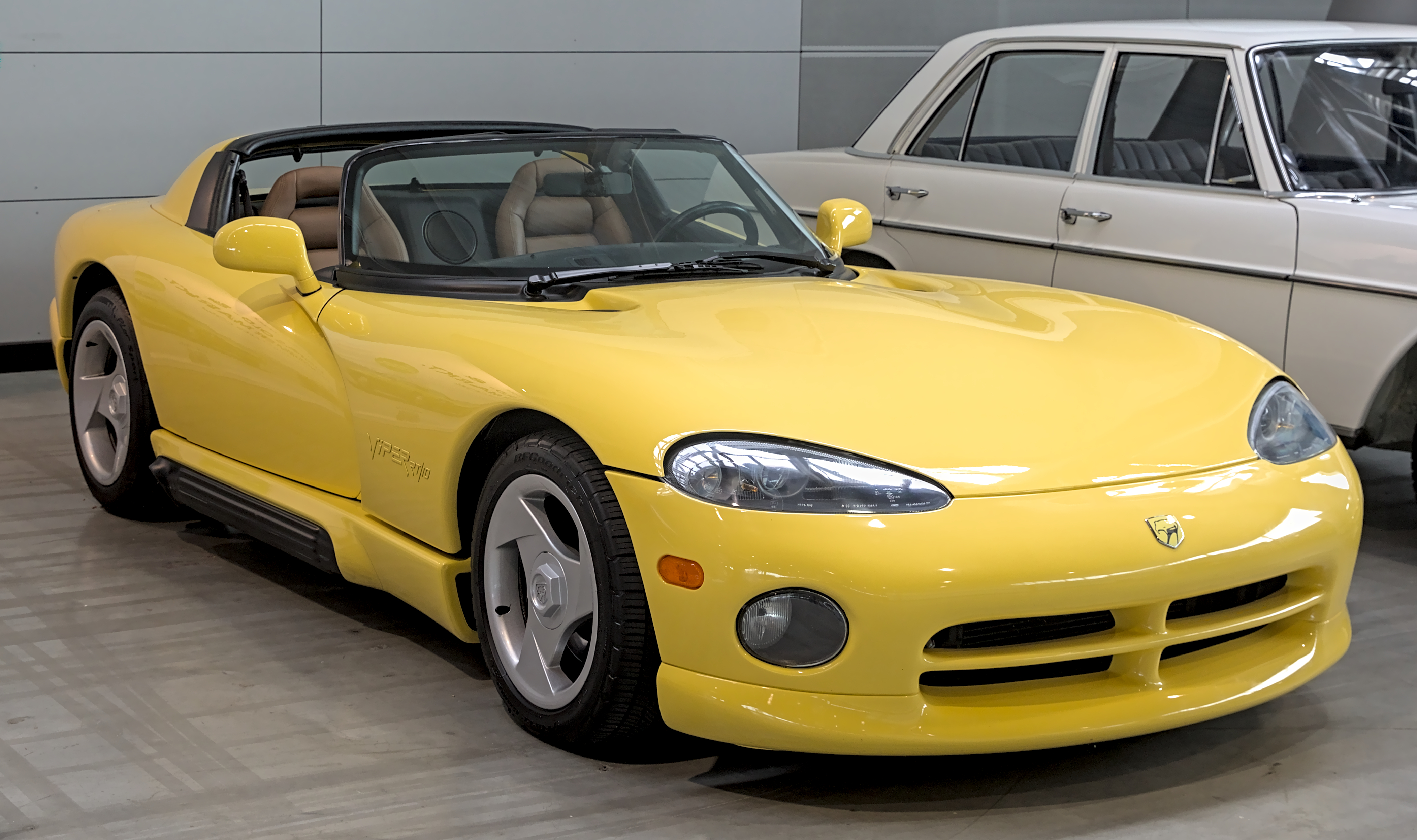
4. **Dodge Viper RT/10**If you ever wanted a car that screamed pure, unadulterated American muscle with the subtlety of a sledgehammer, then the Dodge Viper RT/10 was your weapon of choice from the ’90s. This wasn’t a car designed for quiet contemplation; it was a wild, untamed beast, a raw, visceral experience that grabbed you by the scruff of the neck and demanded your full attention.
Its heart was an enormous 8.0-liter V10 engine, a colossal powerplant that churned out a formidable 400 hp. This engine wasn’t just powerful; it was an event, its thunderous growl announcing its presence long before its low-slung, wide-stance body came into view. The Viper RT/10 captured the attention of enthusiasts for its sheer, brutish force and an aggressive design that was impossible to ignore.
Crucially, the RT/10 was a car for purists, a machine deliberately stripped of electronic nannies. No traction control, no stability control, just you, the road, and an immense amount of power at your right foot. Driving it wasn’t just a leisure activity; it was an exercise in skill and finesse, demanding respect and rewarding those brave enough to master its formidable nature.
With minimal creature comforts and a focus entirely on performance, the Viper RT/10 was built for those who truly loved the thrill of the road, the direct connection between driver and machine. It was a defiant statement from Dodge, a car that proudly waved the flag for American automotive passion, proving that sometimes, less intervention means more exhilaration. It remains a raw and unforgettable driving experience.
Car Model Information: 2024 Jeep Wrangler Rubicon
Name: Dodge Viper (SR I)
Production: 1991–1995
ModelYears: 1992–1995
Assembly: New Mack Assembly,Detroit,Michigan
Designer: Tom Gale (designer)
Class: Sports car
BodyStyle: Targa top
Engine: Viper engine#First generation,V10 engine
Powerout: 400 hp
Abbr: on
Transmission: BorgWarner,Borg-Warner_T-56_transmission,manual transmission
Wheelbase: 2446 mm
Length: 4450 mm
Width: 1920 mm
Height: 1120 mm
Weight: 1490 kg
Successor: Dodge Viper (SR II)
Layout: FR layout
Related: Rinspeed Veleno
Aka: Chrysler Viper (Europe)
Categories: Articles with short description, Cars discontinued in 1995, Cars introduced in 1992, Dodge vehicles, Short description matches Wikidata
Summary: The Dodge Viper (SR I) is the first-generation Viper sports car, manufactured by American automobile manufacturer Dodge. It was originally tested in January 1989 as a prototype, then later introduced in 1991 as a pace car for the Indianapolis 500, then finally going on sale in January 1992.
The SR I began the Dodge Viper model lineup, which would continue on until 2017, consisting of five generations.
The SRI was replaced by the updated SRII after a series of updates in 1995.
Get more information about: Dodge Viper (SR I)
Buying a high-performing used car >>>
Brand: Dodge Model: Viper RT/10
Price: $49,778 Mileage: 27,259 mi.
Read more about: Beyond Their Time: 15 Legendary Muscle Cars That Still Command the Road
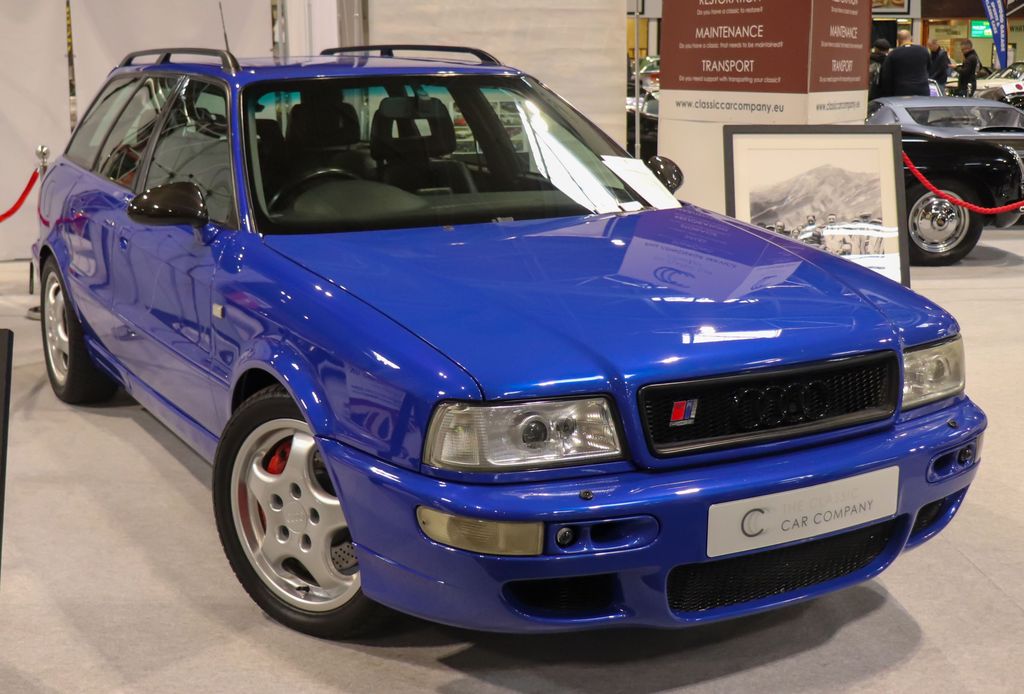
5. **Audi RS2 Avant**Forget everything you thought you knew about estate cars, because the Audi RS2 Avant utterly redefined the genre in the 1990s. This wasn’t just a family hauler; it was the ultimate sleeper car, a Wolf in sheep’s clothing that combined practicality with sheer, mind-bending speed. It was automotive lunacy in the best possible way, and honestly, we’re still a bit giddy about it.
What made the RS2 Avant so outrageously special was its incredible pedigree: a collaboration between Audi and none other than Porsche. Porsche-tuned with genuine 911 brakes, wheels, and mirrors, this wagon was given a serious performance injection. Its turbocharged five-cylinder engine produced sounds that still give me goosebumps, a unique thrumming symphony that hinted at the beast within.
This family-friendly car could go from 0 to 60 mph in under 5 seconds – a figure that was astonishing for any car in the early ’90s, let alone a wagon, and even faster to 30 mph than a McLaren F1! Paired with Audi’s legendary Quattro all-wheel-drive system, it offered incredible grip and confidence, making it unstoppable in almost any condition. And that signature Nogaro Blue paint? Instantly recognizable and endlessly cool.
The RS2 wasn’t just fast; it was the blueprint for every high-performance wagon that followed, setting a new standard for blending utility with supercar-rivalling pace. The coolest part of all is that it was hand-built at Porsche’s Rossle-Bau plant in Zuffenhausen – talk about pedigree! With only about 2,900 units ever made, this glorious wagon is one of the rarest and most desirable Audis ever created, a true legend that mixed practicality with exhilaration.
Car Model Information: 2024 Jeep Wrangler Rubicon
Name: Audi RS 2 Avant (8C)
Manufacturer: Audi
Production: March 1994 – July 1995
Assembly: Zuffenhausen
Successor: Audi RS 4
Class: Entry-level luxury car
BodyStyle: estate car
Layout: longitudinal engine,Front-engine, four-wheel-drive layout
Platform: Volkswagen Group B platform#B4
Engine: List of discontinued Volkswagen Group petrol engines#2.2 R5 20v T 232kW (RS2)
Transmission: manual transmission
Wheelbase: 2611 mm
Abbr: on
Length: 4580 mm
Width: 1694 mm
Related: Audi_80#B4_(1991%E2%80%931996)
Powerout: 315 PS
Sp: uk
Categories: All-wheel-drive vehicles, All articles needing additional references, All articles with unsourced statements, All pages needing factual verification, Articles needing additional references from December 2016
Summary: The Audi RS 2 Avant is a high-performance version of the Audi 80 Avant estate car, manufactured from March 1994 to July 1995. Collaboratively designed as a joint venture between Audi AG and Porsche and based on Audi’s B4/8C platform, it received the internal designation of P1. It featured the most powerful version of Audi’s inline-five cylinder turbocharged engine. It represents Audi’s first “RS” model, and the first of their high-performance Avants.
It is a limited-edition model that was not widely exported outside of Europe, except in limited quantity to Hong Kong, South Africa, Brazil, and New Zealand. However, the RS 2 has amassed a cult following worldwide including Canada and the United States where the RS 2 was not officially imported due to certification costs and weak brand performance in the early 1990s. RS 2s have now been imported to Canada and USA as both allow non-conforming vehicles to be imported once they reach the age of 15 and 25 years respectively.
Get more information about: Audi RS 2 Avant
Buying a high-performing used car >>>
Brand: Audi Model: RS2 Avant
Price: $49,778 Mileage: 27,259 mi.
Read more about: The Unsung Heroes: 12 Vintage Station Wagons That Outran and Outclassed Minivans

6. **BMW M3 E36**After the truly iconic E30 M3, BMW had an unenviable task: how do you follow perfection? Well, with the BMW M3 E36, they somehow absolutely nailed it. This was speed meeting sophistication, a precision instrument for the skilled driver that managed to be more refined than its predecessor yet still profoundly driver-focused. It represented BMW’s sweet spot, a golden era before their cars became too heavy and technology-laden.
The E36 was no ordinary car; it was a symphony of engineering prowess. Its inline-six engine purred with an elegance that belied its immense power, delivering performance with grace and poise. These engines, particularly in the M3, were mechanical masterpieces, producing a sound that still gives enthusiasts goosebumps and defining the driving experience.
The balanced chassis of the E36 M3 allowed for razor-sharp handling, tight cornering, and utterly thrilling drives. It offered a connection to the road that was deeply satisfying, making every twist and turn an absolute joy. While the US-spec M3 famously didn’t get the full-fat European engine – something BMW enthusiasts still quietly lament – it was still a formidable performer, perfectly capturing the essence of BMW’s M division.
A perennial favorite among car enthusiasts, its timeless design and thrilling performance continue to captivate hearts. The E36 represented a sweet spot for BMW, offering a perfect blend of everyday usability and track-day heroics. It stands as a testament to an era when driving pleasure was paramount, and even today, a well-maintained E36 M3 is an absolute joy to behold and, more importantly, to drive.
Car Model Information: 2024 Jeep Wrangler Rubicon
Name: BMW M3
Caption: 2021 BMW M3 Competition (G80)
Manufacturer: BMW M
Production: unbulleted list
Class: Compact executive car
Layout: unbulleted list
Related: unbulleted list
Categories: 1990s cars, 2000s cars, 2010s cars, 2020s cars, All articles with unsourced statements
Summary: The BMW M3 is a high-performance version of the BMW 3 Series, developed by BMW’s in-house motorsport division, BMW M GmbH. M3 models have been produced for every generation of 3 Series since the E30 M3 was introduced in 1986.
The initial model was available in a coupé body style, with a convertible body style made available soon after. M3 saloons were offered initially during the E36 (1994–1999) and E90 (2008–2012) generations. Since 2014, the coupé and convertible models have been rebranded as the 4 Series range, making the high-performance variant the M4. Variants of the 3 Series since then have seen the M3 produced as a saloon, until 2020, when the M3 was produced as an estate (Touring) for the first time, alongside the saloon variant.
Get more information about: BMW M3
Buying a high-performing used car >>>
Brand: BMW Model: M3 E36
Price: $49,778 Mileage: 27,259 mi.
Read more about: Is Your Ride a Ticking Time Bomb? 14 Popular Cars That Can Seriously Let You Down After 100K Miles
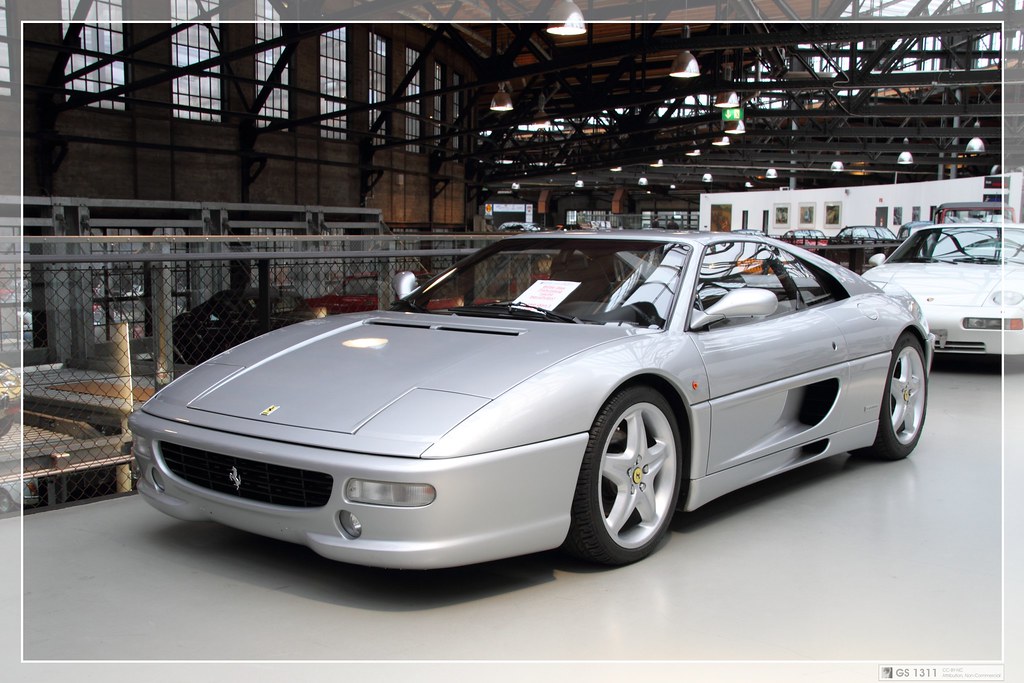
7. **Ferrari F355**The Ferrari F355 wasn’t just a car; it was a symphony on wheels, composed by the masters in Maranello with an artistry that only the Italians seem to possess. Its mid-mounted V8 engine didn’t just run; it sang, an intoxicating, high-pitched wail that stirred the soul with every acceleration, a melody that became the soundtrack to countless driving dreams.
This was a car designed with an exquisite balance of beauty and performance, its elegant lines and perfectly proportioned body a testament to Italian design at its pinnacle. The F355 was a true driver’s dream, offering an unmatched combination of handling precision and engaging feedback that made every journey feel like an event, not merely a commute.
Driving the F355 was, quite frankly, like living a fantasy. Every mile was a melody, every curve a crescendo of mechanical exhilaration. It allowed you to feel utterly connected to the road, providing a tactile experience that modern supercars often struggle to replicate, despite their raw speed advantages.
The F355 represented the pinnacle of Italian design, an embodiment of passion and engineering artistry that remains profoundly desirable today. Its iconic status is well-earned, a beautiful machine that continues to capture imaginations and ignite the desire for pure, unadulterated driving pleasure. It’s a timeless piece of automotive art that truly defines the spirit of the 90s supercar.
Right, so we’ve already taken a thrilling tour through some of the absolute titans that defined the first half of the ’90s automotive landscape. But believe me, the petrol-fueled party is far from over! We’re about to delve into the next wave of legends – a collection of rally royalty, mid-engine marvels, and a few underrated gems that still capture our imaginations and set our hearts racing today. These are the machines that round out our glorious 15, proving that the ’90s really were the decade that just kept on giving.
From the track-focused precision of a stripped-down Porsche to the mud-slinging heroics of a rally icon, this next set of cars showcases the incredible diversity and sheer engineering audacity that blossomed in this unforgettable era. So, tighten your seatbelts, because we’re not just looking at cars; we’re celebrating mechanical art, audacious design, and pure, unadulterated driving passion.
Car Model Information: 1998 Ferrari F355 GTS
Name: Ferrari F355
Caption: Ferrari F355 Berlinetta
Manufacturer: Ferrari
Aka: Ferrari 355 F1
ModelYears: 1995–1999
Production: May 1994–1999
Assembly: Maranello
Predecessor: Ferrari 348
Successor: Ferrari 360
Class: Sports car
BodyStyle: berlinetta,targa top,convertible (car)
Layout: Longitudinal engine,Rear mid-engine, rear-wheel drive layout
Engine: multivalve,Ferrari Dino engine#3.5,V8 engine
Transmission: manual transmission,automated manual transmission
Wheelbase: cvt
Length: cvt
Width: cvt
Height: cvt
Weight: cvt
Designer: Pininfarina
Sp: uk
Categories: All articles needing additional references, All articles with dead external links, All articles with unsourced statements, Articles needing additional references from July 2020, Articles with dead external links from April 2024
Summary: The Ferrari F355 (Type F129) is a sports car manufactured by Italian car manufacturer Ferrari produced from May 1994 until 1999. The car is a heavily revised Ferrari 348 with notable exterior and performance changes. The F355 was succeeded by the all-new Ferrari 360 in 1999.
Design emphasis for the F355 was placed on significantly improved performance, as well as drivability across a wider range of speeds and in different environments (such as low-speed city traffic).
Get more information about: Ferrari F355
Buying a high-performing used car >>>
Brand: Ferrari Model: F355
Price: $144,991 Mileage: 39,074 mi.
Read more about: Navigating the Shifting Market: Nine Iconic Classic Sports Cars Set for Significant Value Declines in 2025

8. **Porsche 911 Carrera RS (993)**Ah, the 993-generation Porsche 911. For many, it’s the pinnacle of the air-cooled era, and then you throw ‘Carrera RS’ into the mix? You’ve got automotive gold, my friends. This isn’t just a car; it’s the epitome of Porsche’s legendary engineering, distilled into its purest, most driver-focused form. It took the already brilliant 911 and sharpened every edge, stripped every ounce of unnecessary weight, turning it into a lightweight, race-bred weapon that somehow remained utterly usable on the road.
Weighing in at a svelte 2,700 lbs, this machine felt like it was carved from a single block of granite, yet danced with the agility of a ballet dancer. Its 3.6-liter flat-six engine didn’t just churn out 270 hp; it sang a glorious, metallic aria as it climbed through the revs, delivering a raw and visceral driving experience that few cars, then or now, could match. This was a car that connected you directly to the asphalt, letting you feel every nuance, every grip limit.
What truly solidified the Carrera RS as a favorite among purists was its unapologetic dedication to performance. You got a stripped-down interior, a wider track for enhanced stability, and an adjustable rear wing that wasn’t just for show – it was there to generate serious downforce. All these elements combined to deliver precise handling and a thrilling driving experience that rewarded skill and commitment. It was a proper driver’s car, a testament to what happens when engineers are allowed to chase perfection without compromise.
This 911 wasn’t for the faint of heart or for those who preferred electronic nannies to actual driving talent. It was for the enthusiasts, the ones who understood that the ultimate thrill came from mastering a machine that demanded your full attention. The 993 Carrera RS wasn’t just dynamic; it was an invitation to truly drive, and what an invitation it was. It stands as a shining example of ’90s analogue driving purity.
Car Model Information: 2024 Jeep Wrangler Rubicon
Name: Porsche 911
Caption: The 1 millionth 911 produced on display at Volkswagen Group Forum, Berlin
Designer: Ferdinand Alexander Porsche
Manufacturer: Porsche
Production: September 1964 – present
Assembly: Stuttgart,Baden-Württemberg
Class: Sports car
BodyStyle: unbulleted list
Related: unbulleted list
Layout: Rear-engine design,rear-wheel drive
Predecessor: Porsche 356
Categories: 1970s cars, 1980s cars, 1990s cars, 2+2 coupés, 2000s cars
Summary: The Porsche 911 model series (pronounced Nine Eleven or in German: Neunelf) is a family of German two-door, high performance rear-engine sports cars, introduced in September 1964 by Porsche AG of Stuttgart, Germany. Now in its eighth generation, all 911s have a rear-mounted flat-six engine, and usually 2+2 seating, except for special 2-seater variants. Originally, 911s had air-cooled engines, and torsion bar suspension, but the 911 has been continuously enhanced, and evolved across generations. Though the 911 core concept has remained largely unchanged, water-cooled engines were introduced with the 996 series in 1998, and front and rear suspension have been replaced by Porsche-specific MacPherson suspension up front, and independent multi-link rear suspension.
The 911 has been raced extensively by private and factory teams, in a variety of classes. It is among the most successful competition cars. In the mid-1970s, the naturally aspirated 911 Carrera RSR won world championship races including Targa Florio and the 24 Hours of Daytona. The 911-derived 935 turbo also won the 24 Hours of Le Mans in 1979. Porsche won the World Championship for Makes in 1976, 1977, 1978, and 1979 with 911-derived models.
In a 1999 poll to determine the Car of the Century, the 911 ranked fifth — one of two in the top five that had remained continuously in production (the original Beetle remained in production until 2003). The one millionth example was manufactured in May 2017 and is in the company’s permanent collection.
Get more information about: Porsche 911
Buying a high-performing used car >>>
Brand: Porsche Model: 911 Carrera RS
Price: $49,778 Mileage: 27,259 mi.
Read more about: More Than Just Horsepower: A Deep Dive into 14 Cars That Challenge Even Seasoned Drivers
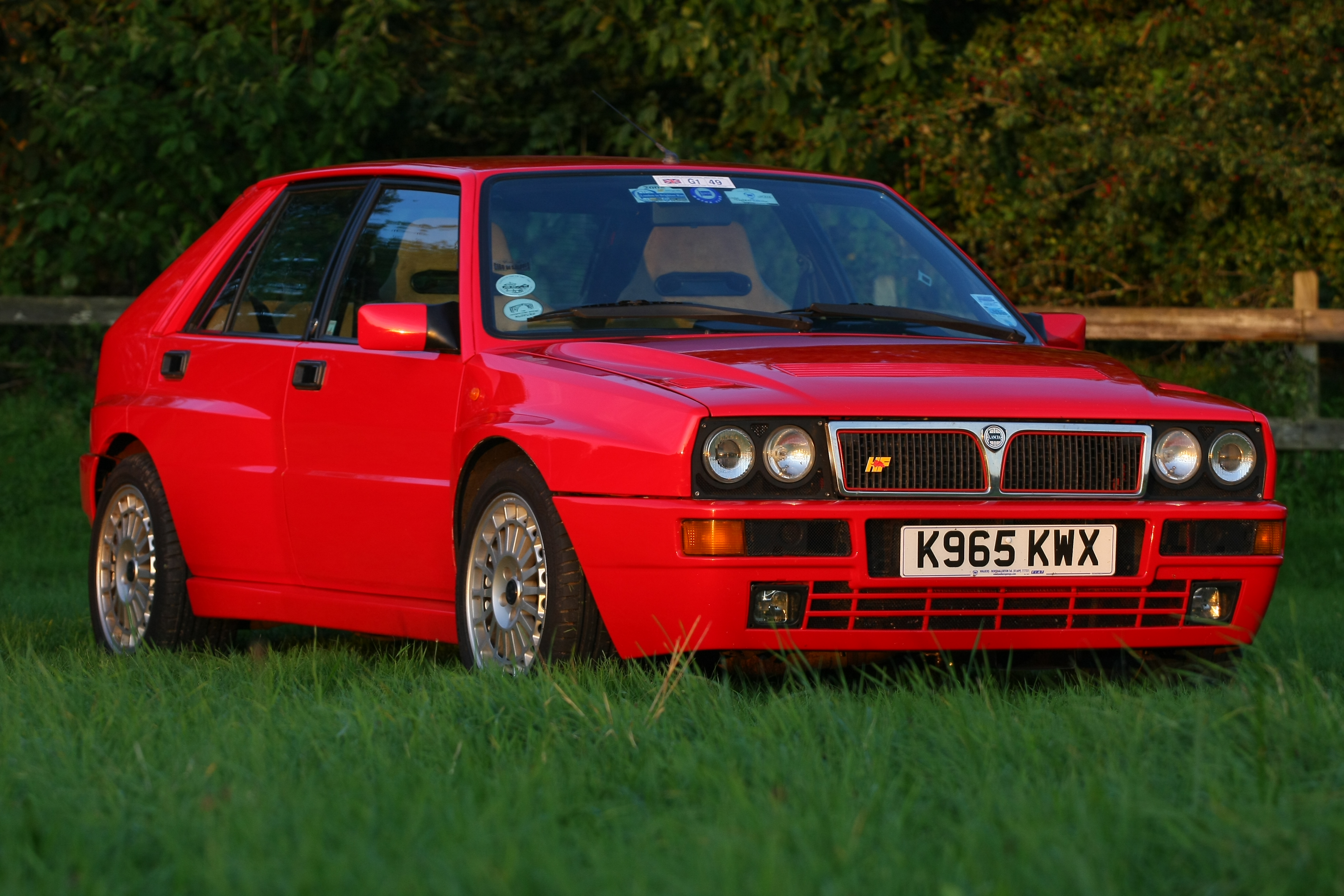
9. **Lancia Delta HF Integrale Evo II**Now, if you’re a true rally fan, you’ll know exactly why the Lancia Delta HF Integrale Evo II is not just special, but utterly sacred. Six consecutive World Rally Championship titles speak volumes, transforming what began life as a humble family hatchback into an absolute, mud-flinging, asphalt-eating monster. This wasn’t just a car bred for performance; it was a rally champion turned road warrior, a machine with character and charisma in spades.
The EVO II was the ultimate evolution of this legend, looking every bit the part with its aggressively flared arches, serious hood vents, and an adjustable rear wing that screamed ‘born to win’. Underneath that iconic skin lay a turbocharged 2.0-liter engine, pushing out a healthy 215 hp – a figure that, in the early ’90s, was serious business for a car of this size and stature. But it wasn’t just about raw power; it was about how it put that power down.
Lancia’s permanent all-wheel-drive system was revolutionary, a mechanical marvel that ensured power went to whichever wheels had the most grip, making it nearly unstoppable on any surface. Whether you were carving up a mountain pass or navigating a tricky B-road, the Integrale delivered incredible confidence and grip. The interior, gloriously ’90s with its supportive Recaro seats and chunky steering wheel, perfectly set the stage for a truly engaging drive.
What makes the Integrale EVO II truly special is its incredible dual nature. It was practical enough for the grocery run – if you didn’t mind a few stares – but utterly capable of tackling rally stages on the weekend. It’s the perfect expression of the homologation specials from a time when manufacturers truly had to build road cars to go racing, and frankly, we miss them desperately. This true Italian stallion continues to inspire passion and excitement, a testament to Lancia’s glorious, albeit sadly departed, golden era.
Car Model Information: 2024 Jeep Wrangler Rubicon
Name: Lancia Delta
Caption: Lancia Delta LX 1.3 (first generation, 1986–91 model)
Manufacturer: Fiat Auto
Production: 1979–1999,2008–2014
Class: Small family car
BodyStyle: Hatchback
Layout: Transverse engine,Front-engine, front-wheel-drive layout
Categories: 1980s cars, 1990s cars, 2000s cars, 2010s cars, All articles with dead external links
Summary: The Lancia Delta (stylized Lancia δ) is a small family car produced by Italian automobile manufacturer Lancia in three generations. The first generation (1979–1994) debuted at the 1979 Frankfurt Motor Show, the second generation (1993-1999) debuted at the 1993 Geneva Motor Show, and the third generation (2008–2014) debuted at 2008 Geneva Motor Show.
The first generation Delta dominated the World Rally Championship during the late 1980s and early 1990s. The homologation requirements of Group A regulations meant marketing road-going versions of these competition cars — the Lancia Delta HF 4WD and HF Integrale. A total of 44,296 Integrales were produced. Total production number of the Delta first generation was 478,645 cars.
Get more information about: Lancia Delta
Buying a high-performing used car >>>
Brand: Lancia Model: Delta HF Integrale Evo II
Price: $49,778 Mileage: 27,259 mi.
Read more about: Rowan Atkinson’s Ultimate Garage: Unpacking Mr. Bean’s Extraordinary Car Collection from BMW 328 to McLaren F1
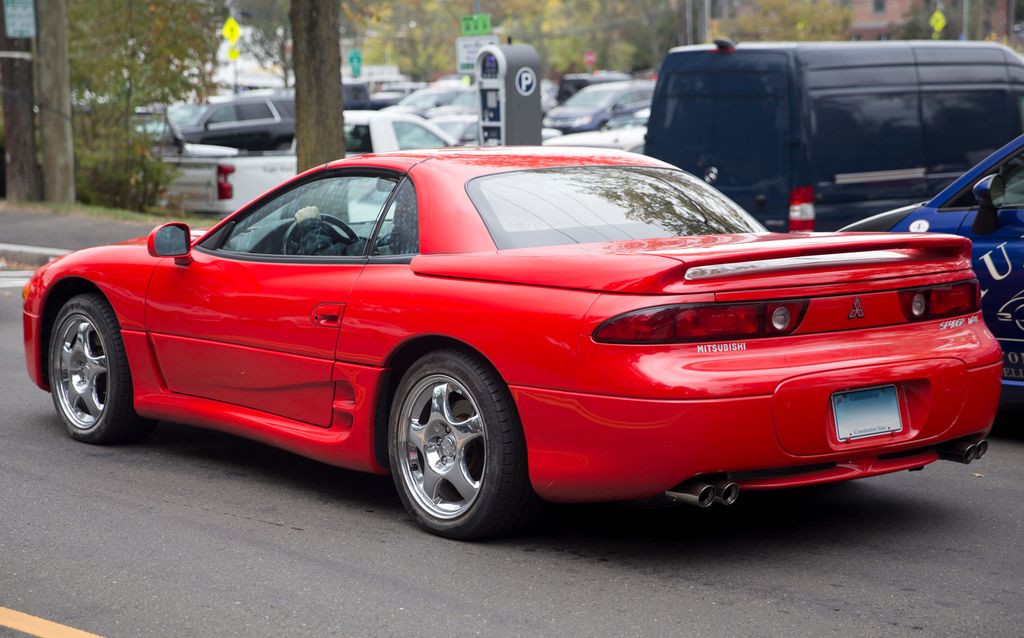
10. **Mitsubishi 3000GT VR-4**Step aside, because the Mitsubishi 3000GT VR-4 was a technological tour de force that stood out even in a decade teeming with innovation. This wasn’t just a pretty face; it was a tech-savvy powerhouse, a true showcase of Japanese engineering prowess that packed both brains and serious brawn into one muscular package.
With twin turbos and an advanced all-wheel-drive system, the VR-4 had the grunt and the grip to truly compete with the best. But Mitsubishi didn’t stop there. This machine was brimming with cutting-edge features like active aerodynamics, which adjusted spoilers and air dams for optimal downforce, and four-wheel steering, which made this grand tourer surprisingly nimble. It felt like you were driving a concept car that somehow made it to production.
This was a car that truly embodied the spirit of the ’90s, pushing boundaries and demonstrating what was possible when engineers were given free rein. Its muscular build and bold design weren’t just for show; they hinted at the sophistication and performance that lay beneath. It grabbed imaginations worldwide, leaving a lasting legacy as a car that dared to be different and delivered a driving experience unlike anything else.
The 3000GT VR-4 wasn’t just a quick car; it was a statement. It challenged perceptions of what a Japanese sports car could be, offering a blend of luxury, technology, and performance that was truly ahead of its time. It’s a car that, even today, still turns heads and reminds us of an era when Mitsubishi was at the absolute peak of its performance game.
Car Model Information: 2024 Jeep Wrangler Rubicon
Caption: Mitsubishi 3000GT
Name: Mitsubishi 3000GT (Z15A/Z16A)
Aka: Mitsubishi GTO (Japan),Dodge Stealth
Manufacturer: Mitsubishi Motors
Assembly: Okazaki, Aichi
Production: unbulleted list
Predecessor: Mitsubishi Starion
Class: unbulleted list
Platform: unbulleted list
Related: Mitsubishi Diamante,Mitsubishi Sigma
BodyStyle: ubl
Engine: unbulleted list
Transmission: unbulleted list
Wheelbase: 2470 mm
Abbr: on VR-4 Spyder
Length: 4600 mm
Width: 1840 mm
Height: 1285 mm
Weight: {{convert,3131,lb,kg,0,abbr=on
Layout: Transverse engine,front-engine,front-wheel drive
Designer: Masaru Suzuki (1987)
Categories: 2000s cars, All-wheel-drive vehicles, Articles with short description, CS1 German-language sources (de), CS1 Japanese-language sources (ja)
Summary: The Mitsubishi 3000GT is a front-engine, all-wheel/front-wheel drive grand touring/sports car manufactured and marketed by Mitsubishi from 1990 until 2000 over three different series. Manufactured in a three-door hatchback coupé body style in Nagoya, Japan, the 2+2 four-seaters were marketed in the Japanese domestic market as the GTO, and globally as 3000GT. In North America, it was sold both as the Mitsubishi 3000GT (1991–1999) and the Dodge Stealth (1991–1996), a badge engineered, mechanically identical captive import. As a collaborative effort between Chrysler and Mitsubishi Motors, Chrysler was responsible for the Stealth’s exterior styling.
The car was based on Mitsubishi’s Sigma/Diamante and retained their transverse mounted 3-liter, 24-valve V6 engines and front-wheel-drive layout. The GTO’s engines were naturally aspirated or with twin-turbochargers and were also available with active aerodynamics (automatically adjusting front and rear spoilers), four-wheel-steering, full-time all-wheel-drive and adaptive suspension.
Mitsubishi marketed a retractable hardtop variant, which were engineered and converted from coupé models in California by ASC, and sold as the GT Spyder or VR4 Spyder for model years 1993–1995. These were the first fully automated retractable hardtop marketed since the 1959 Ford Skyliner.
The JDM model took its name from the Galant GTO, a two-door hardtop coupé marketed by the company in the early 1970s, which in turn took its name from the Ferrari 250 GTO, short for Gran Turismo Omologata – “Omologata” signifying that it met motorsport homologation requirements.
Get more information about: Mitsubishi 3000GT
Buying a high-performing used car >>>
Brand: Mitsubishi Model: 3000GT VR-4
Price: $49,778 Mileage: 27,259 mi.
Read more about: 1990s Automotive Icons: From Unconventional Classics to Coveted Collectibles
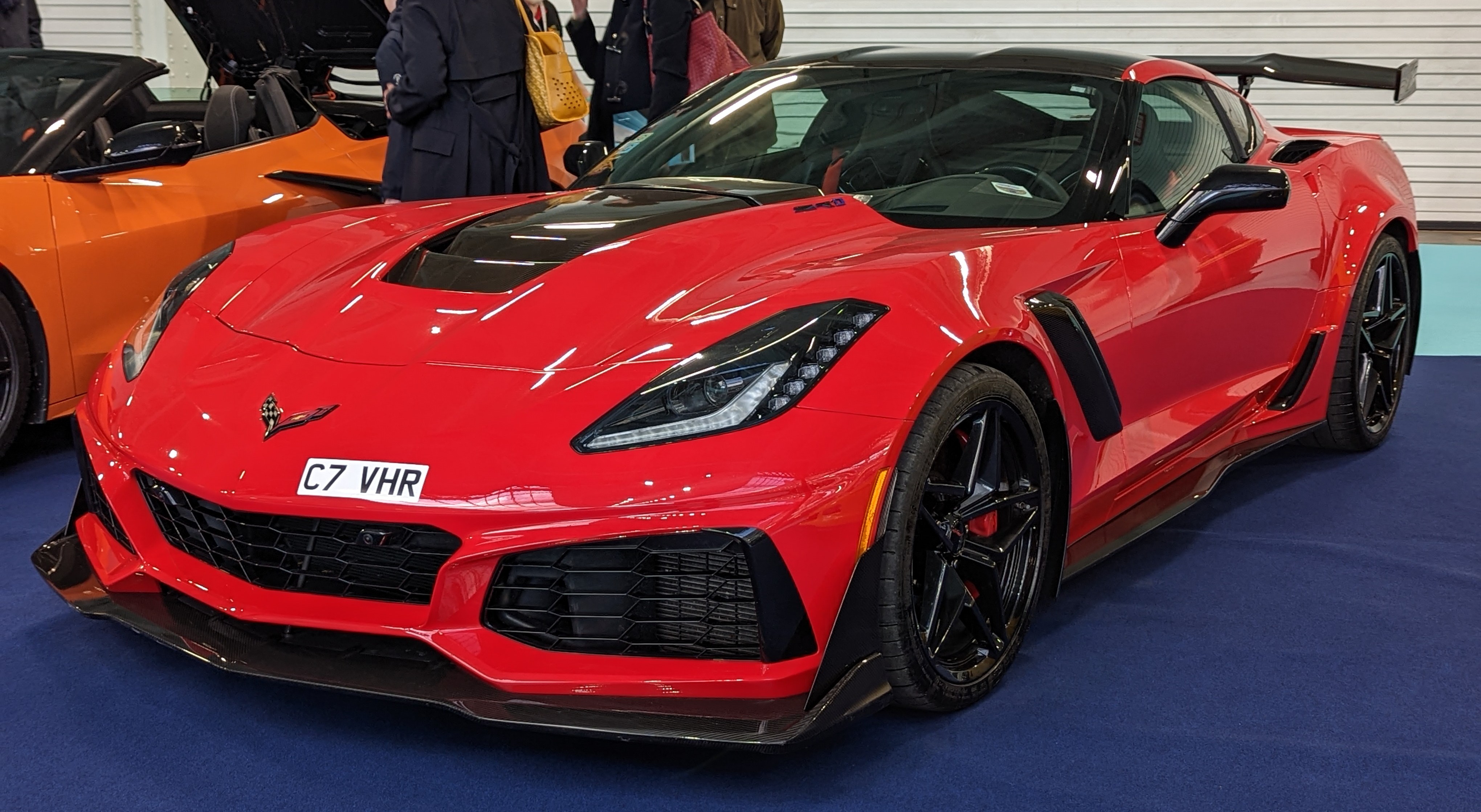
11. **Chevrolet Corvette ZR-1**If ever a car earned its nickname, it was the Chevrolet Corvette ZR-1 – ‘King of the Hill’. And boy, did it wear that crown with authority! This was no ordinary Corvette; this was a powerhouse on four wheels, an absolute beast that truly elevated the American sports car to an entirely new level, proving that Detroit could play with the best of Europe.
At its heart was the legendary LT5 engine, designed by none other than Lotus, bringing a dose of exotic engineering to the Vette’s brute force. This sophisticated powerplant churned out incredible performance, making the ZR-1 a force to be reckoned with on any road or track. Its advanced engineering and performance capabilities transformed it into the ultimate American sports car, a machine that commanded respect.
With its refined lines and menacing stance, the ZR-1 exuded pure charisma. It looked fast, even when standing still, and its aggressive aesthetics hinted at the immense power lurking beneath the hood. Owning a ZR-1 wasn’t just about having a fast car; it meant possessing a significant piece of Corvette history, a badge of honor for enthusiasts who understood its significance. It was a symbol of American automotive ambition, unleashed.
The ZR-1 truly cemented the Corvette’s status as a world-class contender, delivering a driving experience that was both thrilling and surprisingly sophisticated. It showed that America could produce a high-performance machine with the engineering depth to match its muscle. This ‘King of the Hill’ remains a beloved icon, a testament to the pursuit of speed and excellence that defined the ’90s.
Car Model Information: 2024 Jeep Wrangler Rubicon
Categories: All set index articles, Articles with short description, Set index articles, Short description with empty Wikidata description
Summary: ZR1, (or ZR-1), is a designation that has been used on several different generational models of the Chevrolet Corvette.
For the 3rd generation (C3), the ZR1 & ZR2 were special engine packages. Only 53 of these packages were optioned during the 1970 to 1972 model years.
For the 4th generation (C4), the ZR1 was the top-tier package that was available from 1990 to 1995, with a special engine designed in partnership with Lotus, after General Motors acquired Group Lotus, and with the objective of creating the world’s fastest production car. Other upgrades included steering, braking, specially designed Goodyear tires, and changes to body fascia.
For the 6th generation (C6), the ZR1 was a top-tier model package, the centerpiece of which was a new supercharged engine, with the supercharger visible through a window in the hood. There were numerous other upgrades to virtually every aspect of the car.
For the 7th generation (C7), the ZR1 was again the top-tier variant available, beginning in 2019. While improvements were made and there were significant changes to the body styling, the engine retained the same displacement and was again supercharged, with the unit visible through a hood window.
For the 8th generation (C8), the ZR1 was again on offer as the top variant for 2025, but major changes had been made to the car, not the least of which was to the Corvette layout, switching from a front mid-engine, rear-wheel-drive layout (FMR) to a rear mid-engine, rear-wheel-drive layout (RMR), moving the engine to the rear for the first time since the Corvette was first introduced 65 years prior. Major changes were also made to the engine’s crankshaft, the displacement was reduced, and in place of the supercharger, the motor now sported a pair of turbochargers. All this combined made for the most powerful engine in the company’s history.
Get more information about: Chevrolet Corvette ZR1
Buying a high-performing used car >>>
Brand: Chevrolet Model: Corvette ZR-1
Price: $49,778 Mileage: 27,259 mi.
Read more about: Unleash Your Inner Enthusiast: Discover 12 Legendary Classic Corvettes That Defined American Automotive Excellence!
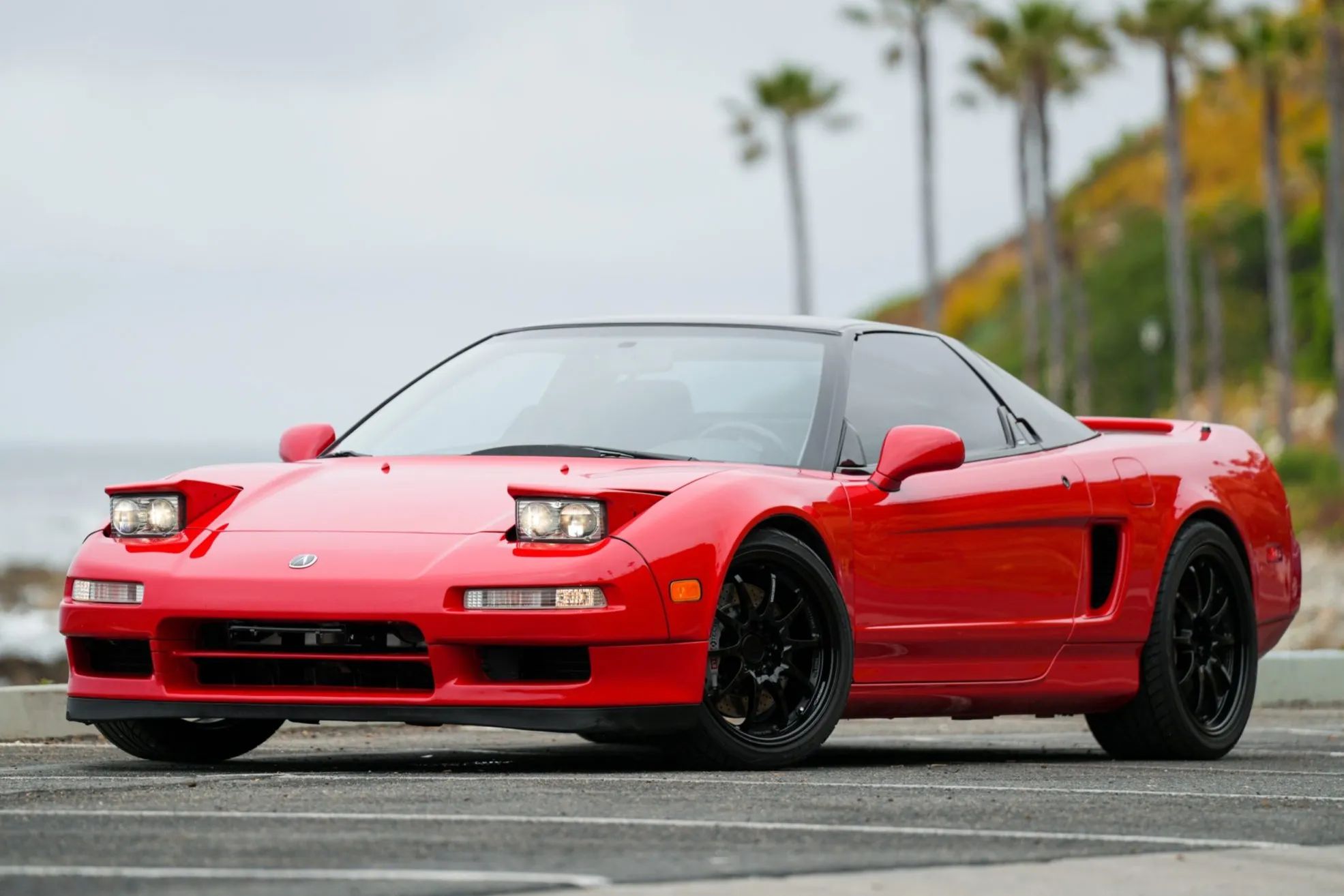
12. **Acura NSX**Like a samurai sword on wheels, the Acura NSX didn’t just cut through the automobile world in the ’90s; it sliced it clean in two, setting a new standard for what a supercar could be. This was Honda’s audacious statement to the world, proving that exotic performance didn’t have to come with a side order of mechanical drama or an empty wallet. Reliability and everyday usability in a supercar? Unheard of, until the NSX arrived.
Crafted with an aluminum body and powered by a high-revving V6 engine, the NSX was light as a feather and fast as the wind. But its true genius lay in its design philosophy. Developed with input from the legendary F1 driver Ayrton Senna, this car was built for the track but perfectly fit for the road. It offered an unparalleled balance of performance and practicality, making it a true daily driver supercar, something its Italian rivals simply couldn’t touch at the time.
Who could resist the allure of its refined, timeless lines and those unforgettable popping headlights? Not us! The NSX’s design was elegant yet purposeful, hinting at its capabilities without resorting to excessive flash. Its mid-engine layout, coupled with Honda’s meticulous engineering, delivered a driving experience that was precise, engaging, and incredibly rewarding.
The NSX demonstrated that an everyday supercar was not a contradiction in terms, but a brilliant reality. It forced other manufacturers to rethink their approach, proving that you could have blistering performance and stunning looks without sacrificing usability. It remains a beloved icon, a testament to Honda’s visionary engineering and a car that still impresses with its sheer brilliance today.
Car Model Information: 1992 Acura NSX Base
Name: Honda NSX
Caption: Acura NSX (first generation, NA2) along with some NA1 NSX cars
Manufacturer: Honda
Aka: Acura NSX (North America)
Production: 1990–2006 (NA1/2),2016–2022 (NC1/2)
Class: Sports car
ModelYears: 1991–2006,2017–2023
Categories: 2000s cars, 2010s cars, 2020s cars, 24 Hours of Le Mans race cars, All-wheel-drive vehicles
Summary: The Honda NSX, marketed in North America as the Acura NSX, is a two-seater, rear mid-engined, rear-wheel drive sports car manufactured by Honda.
The origins of the NSX trace back to 1984, with the HP-X (Honda Pininfarina eXperimental) concept, for a 3.0 L (180 cu in) V6 rear mid-engine, rear-wheel drive sports car. Honda, with the intention of meeting or exceeding the performance of the then V8 engine Ferrari range, committed to the project, aiming at both reliability and a lower price. The concept evolved and had its name changed to NS-X, which stood for “New”, “Sportscar” “eXperimental”, although the production model launched as the NSX.
Get more information about: Honda NSX
Buying a high-performing used car >>>
Brand: Acura Model: NSX
Price: $93,999 Mileage: 62,145 mi.
Read more about: Ignite Your Passion: 15 Iconic Cars That Still Dominate Men’s Automotive Dreams and Inspire Unforgettable Drives
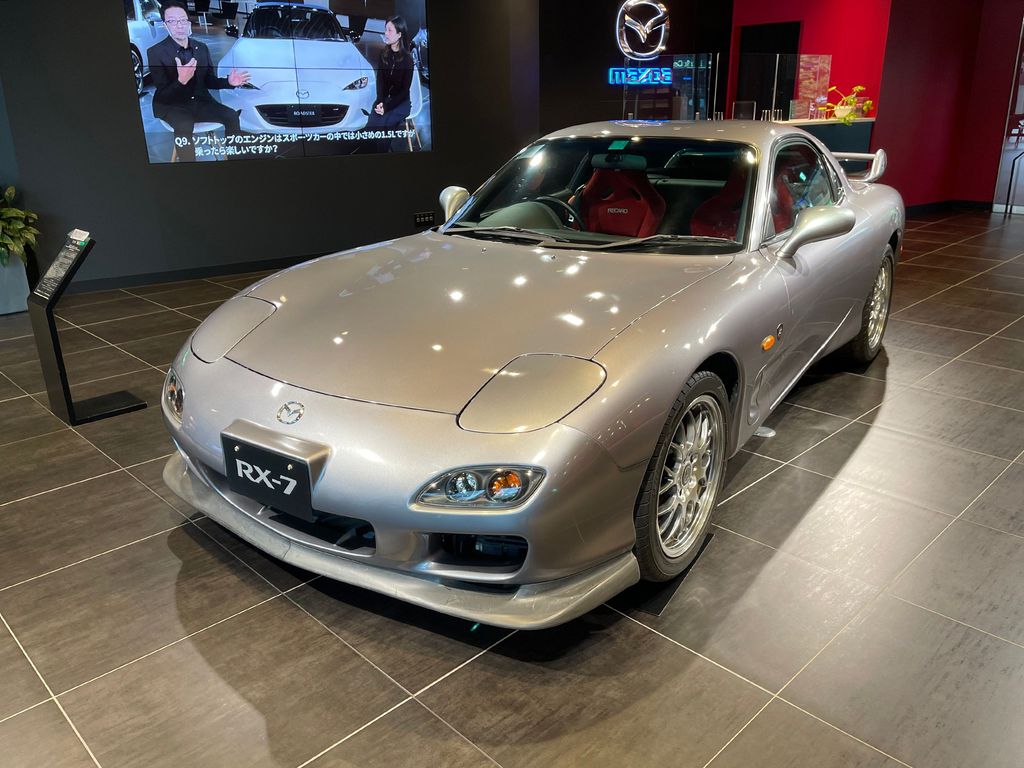
13. **Mazda RX-7 FD**If you wanted a sports car that dared to be different, that offered a driving experience as unique as its engine note, then the Mazda RX-7 FD was your weapon of choice in the ’90s. This was a lightweight, rotary-powered gem that didn’t just define the decade’s sports car scene; it carved its own, utterly exhilarating niche. It was a marvel of packaging, performance, and pure, unadulterated driving fun.
With its sleek curves and incredibly aerodynamic handling, the FD RX-7 offered an exhilarating driving experience that felt distinctly Japanese yet universally appealing. At its heart was that glorious twin-rotor Wankel engine, a mechanical curiosity that revved all the way up to an astonishing 9,000 RPM, producing 276 hp. It was a unique symphony of engineering that delighted the senses and offered instant, lag-free response.
Despite its compact size, the RX-7 delivered precision handling that made it a firm favorite among driving enthusiasts who valued agility and feedback over brute force. Its perfectly balanced chassis and communicative steering meant every corner was an absolute joy, every twist in the road an invitation to push a little harder. This car truly felt like an extension of the driver, a concept often talked about but rarely achieved so completely.
The FD RX-7 quickly developed a cult following, and its incredible performance and distinctive character cemented its status as a true ’90s icon. It was a car that proved there was more than one way to build a high-performance machine, and that sometimes, thinking outside the box led to pure genius. It’s a testament to Mazda’s brave engineering and a car that still demands respect and admiration.
Car Model Information: 2024 Jeep Wrangler Rubicon
Name: Mazda RX-7
Caption: 1994 Mazda RX-7 R2 (FD3S)
Manufacturer: Mazda
Aka: Mazda Savanna RX-7 (Japan, 1978–1991),Mazda ɛ̃fini RX-7 (Japan, 1991–1997)
Class: Sports car
Production: 1978–2002,811,634 produced
Assembly: Hiroshima
Platform: Mazda F platform
Layout: Front-engine, rear-wheel-drive layout#Front mid-engine, rear-wheel-drive layout
Predecessor: Mazda RX-3
Successor: Mazda RX-8
Categories: 1980s cars, 1990s cars, 2000s cars, 24 Hours of Le Mans race cars, All articles needing additional references
Summary: The Mazda RX-7 is a front mid engine, rear-wheel-drive, rotary engine-powered sports car, manufactured and marketed by Mazda from 1978 through 2002 across three generations, all of which incorporated the use of a compact, lightweight Wankel rotary engine.
The first-generation RX-7, codenamed SA (early) and FB (late), is a two-seater two-door hatchback coupé. It featured a 12A carbureted rotary engine as well as the option for a 13B rotary engine with electronic fuel injection in later years. The second-generation RX-7, carrying the internal model code FC, was offered as a two-seater coupé with a 2+2 option available in some markets, as well as in a convertible body style. This was powered by the 13B rotary engine, offered in naturally aspirated or turbocharged forms. The third-generation RX-7, model code FD, was offered as a two-seater coupé with a 2+2 version offered as an option for the Japanese market. It featured a sequentially turbocharged 13B REW engine.
More than 800,000 RX-7s were manufactured over its lifetime.
Get more information about: Mazda RX-7
Buying a high-performing used car >>>
Brand: Mazda Model: RX-7 FD
Price: $49,778 Mileage: 27,259 mi.
Read more about: From Keys to Cassettes: 14 Once-Loved Car Features That Are Now Relics of the Past
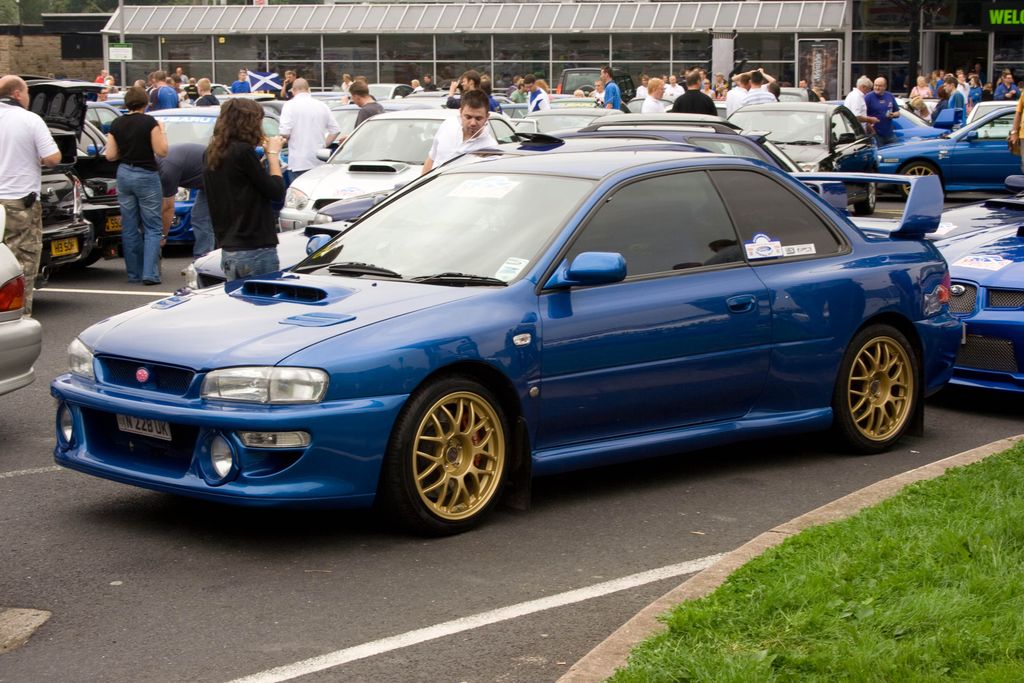
14. **Subaru Impreza 22B STI**Here it is, the legend! The Subaru Impreza 22B STI wasn’t just a car; it was a special edition, a homologation hero forged in the fires of World Rally Championship success. Built to commemorate Subaru’s incredible three WRC titles, this was the ultimate expression of rally performance made street legal, and oh boy, did it make a statement.
With a turbocharged 2.2-liter flat-four engine thrumming away, producing a mighty 280 hp, the 22B combined ferocious rally capabilities with undeniable road presence. But it wasn’t just about the power; it was about how it worked in harmony with Subaru’s legendary symmetrical all-wheel-drive system and lightweight design. This combination made it an absolute weapon, offering grip and acceleration that defied belief in almost any condition.
Limited to just 400 units, the 22B became an instant collector’s item, a mythical beast for those who understood its true pedigree. Its aggressive styling, complete with massively wide fenders, an imposing rear wing, and those iconic gold wheels, gave it a distinct and utterly unforgettable look. It radiated an aura of pure competition, a car that looked like it had just rolled off a rally stage and onto your driveway.
The 22B’s performance, combined with its rarity and rally heritage, made it a true legend in the world of performance cars. It wasn’t just fast; it was a piece of motorsport history you could own and drive, an experience that captured the very essence of ’90s rally fever. It remains a holy grail for enthusiasts, a symbol of Subaru’s golden age of dominance.
Car Model Information: 2024 Jeep Wrangler Rubicon
Name: Subaru Impreza
Caption: 2024 Subaru Impreza hatchback (GU)
Manufacturer: Subaru
Production: 1992–present
Predecessor: Subaru Leone
Successor: Subaru WRX
Class: Compact car
BodyStyle: coupe
Layout: Front-engine, front-wheel drive layout
Categories: 2000s cars, 2010s cars, 2020s cars, All-wheel-drive vehicles, All Wikipedia articles written in American English
Summary: The Subaru Impreza (Japanese: スバル・インプレッサ, Hepburn: Subaru Inpuressa) is a compact car that has been manufactured by the Japanese automaker Subaru since 1992. It was introduced as a replacement for the Leone, with the predecessor’s EA series engines replaced by the new EJ series. It is now in its sixth generation.
Subaru has offered a 5-door hatchback body variant since 2008. The firm also offered a coupé from 1995 until 2001, a 4-door sedan up to the fifth generation, and a 5-door wagon from the Impreza’s introduction which was replaced by a hatchback with the third generation in 2008. Mainstream versions have received “boxer” flat-four engines ranging from 1.5- to 2.5-liters, with the performance-oriented Impreza WRX and WRX STI models upgraded with the addition of turbochargers. Since the third generation series, some markets have adopted the abbreviated Subaru WRX name for these high-performance variants. The first three generations of Impreza were also available with an off-road appearance non-SUV package called the Outback Sport, exclusive to the North American market. For the fourth generation, this appearance package was raised up to be subcompact crossover SUV and renamed the XV (Crosstrek in North America), and is sold internationally. Colloquially, the car is sometimes referred to as Scooby.
Subaru has offered front- and all-wheel drive layouts for the Impreza. Since the late-1990s, some markets have restricted sales to the all-wheel drive model, putting the Impreza in a unique selling proposition in the global compact class, which is usually characterized by front-wheel drive. Japanese models remain available in both configurations.
A 2019 iSeeCars study named the Impreza as the lowest-depreciating sedan in the United States after five years.
Get more information about: Subaru Impreza
Buying a high-performing used car >>>
Brand: Subaru Model: Impreza 22B STI
Price: $49,778 Mileage: 27,259 mi.
Read more about: Rewind to Rad: The ’90s Cars Every Collector is Absolutely Dreaming About Right Now
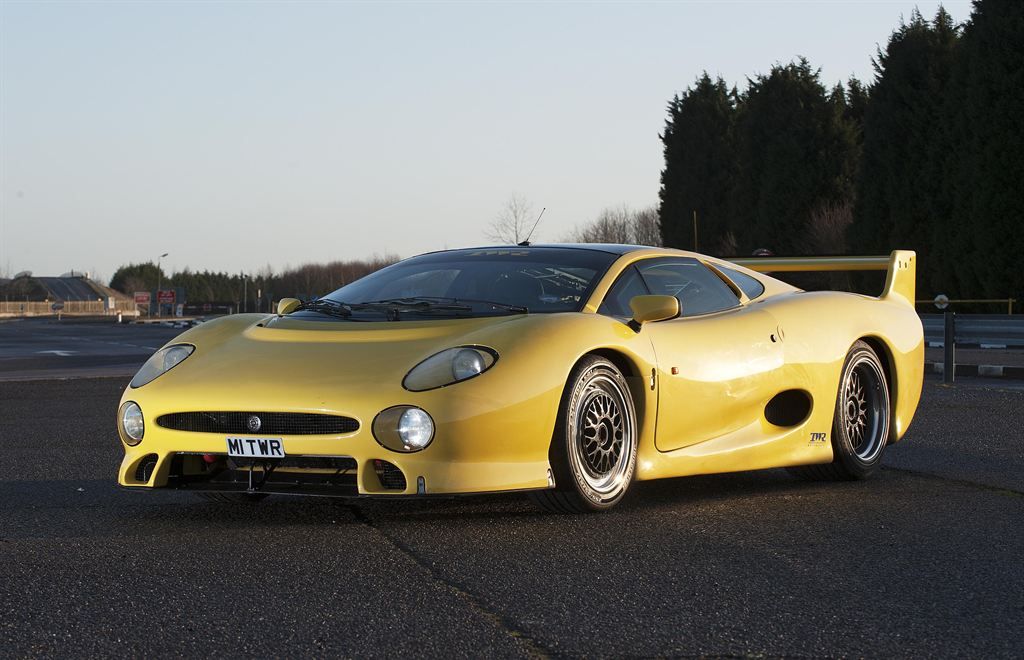
15. **Jaguar XJ220**And finally, to cap off our magnificent ’90s journey, we arrive at a British beast of epic proportions: the Jaguar XJ220. This wasn’t just a car; it was a British supercar that wowed the world with its groundbreaking performance and truly pushed the boundaries of what a road car could achieve. It was, for a brief glorious moment, the fastest production car on the planet.
Powered by a twin-turbo V6 engine, this absolute leviathan produced a staggering 540 hp. The numbers spoke for themselves: the XJ220 could blast from 0 to 60 mph in just 3.6 seconds, and more importantly, it was capable of reaching a top speed of 217 mph, making it one of the absolute fastest cars of the 1990s. This was raw, unadulterated speed wrapped in a stunning package.
Its futuristic design, characterized by sharp lines, a dramatic rear wing, and an impossibly low stance, gave it a distinctive and undeniably exotic look that still turns heads today. It was a car that looked like it had arrived from the future, demanding attention and admiration from every angle. This was Jaguar flexing its engineering muscles, proving it could go toe-to-toe with the very best of Italy and Germany.
The XJ220’s limited production, exotic styling, and blistering performance cemented its status as a sought-after collectible among Jaguar enthusiasts and supercar aficionados alike. It was a car of grand ambition, a testament to British engineering prowess, and a fitting finale to our look at the most impressive machines of a truly golden automotive decade. It stands as a timeless reminder that when the ’90s came calling, they brought out the absolute best.
Read more about: Unleash the Beasts: 8 Ridiculously Cheap Supercharged Cars with Insane Torque That’ll Challenge Your Driving Skills!
So, there you have it – our definitive list of the 15 coolest cars from the 1990s that still impress today. What a ride it’s been, revisiting an era when passion, innovation, and daring design converged to create some of the most unforgettable machines ever to grace our roads. These weren’t just vehicles; they were statements, dreams on wheels, and monuments to the sheer joy of driving. They roared, they purred, they screamed, and they etched themselves into the hearts of petrolheads worldwide. While the world keeps spinning and technology marches on, the legacy of these ’90s legends continues to burn bright, a reminder that true automotive greatness is timeless. Long live the kings of the ’90s! Truly, a magnificent era that continues to inspire and excite. Long may they reign supreme in our collective automotive consciousness. Always a thrill, never a bore!


